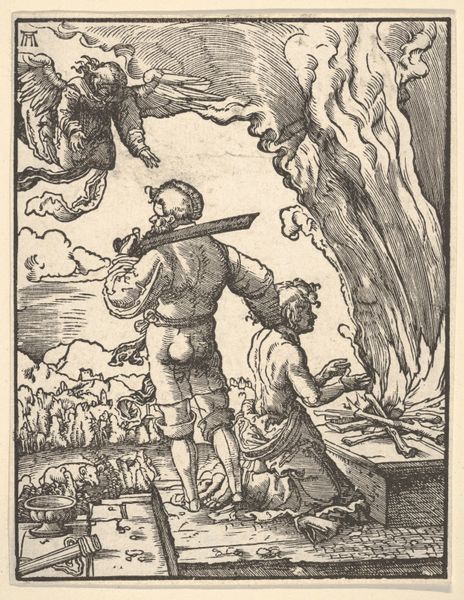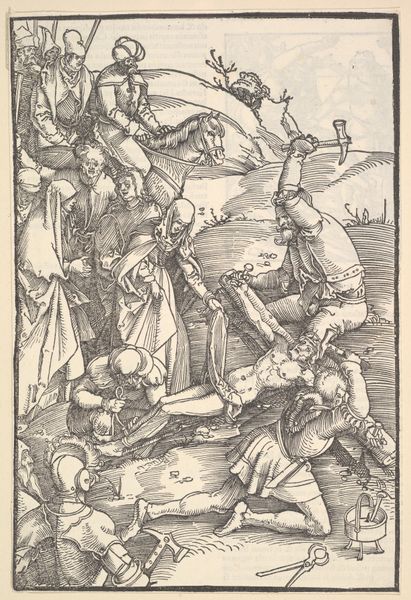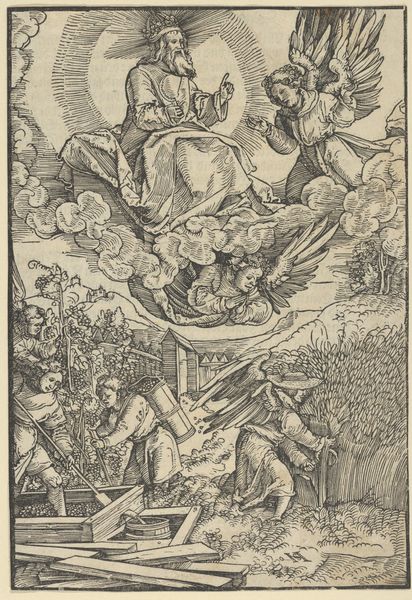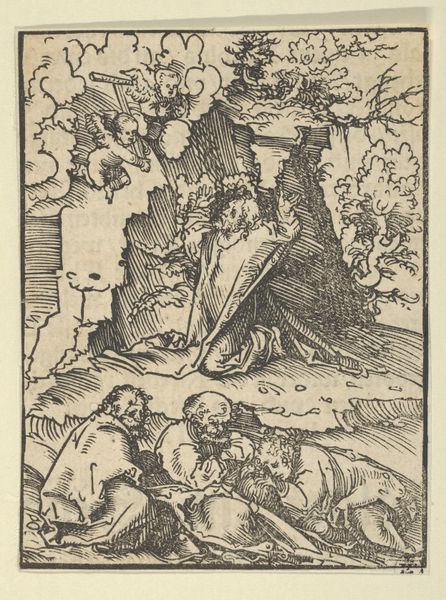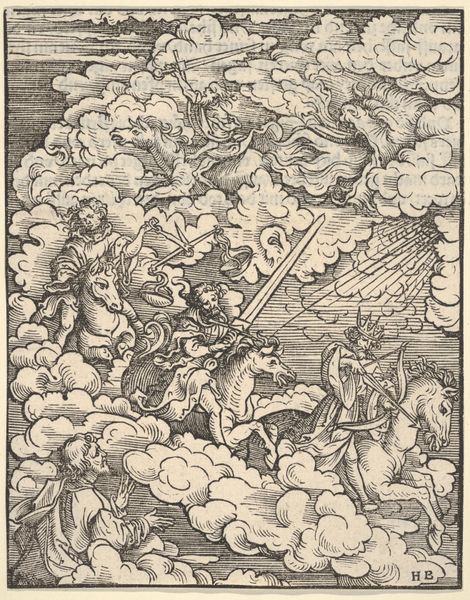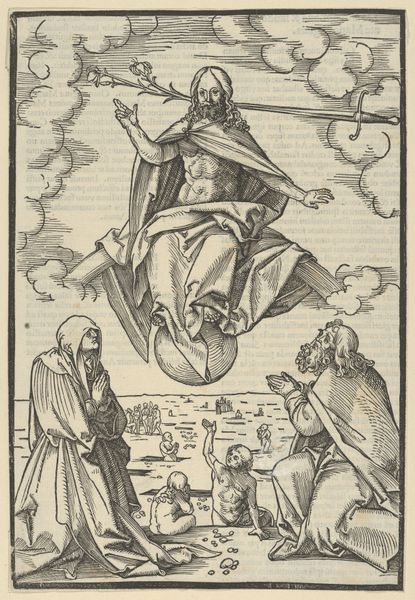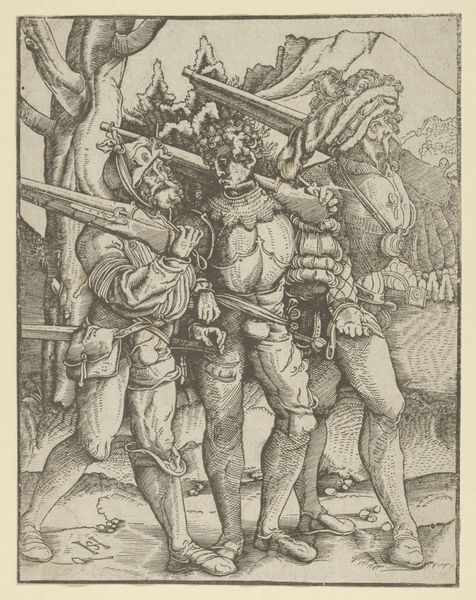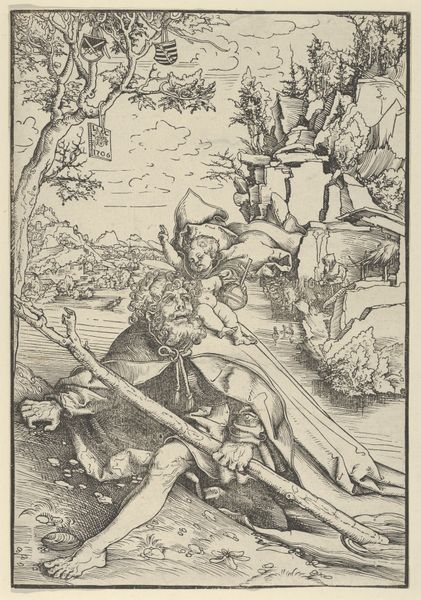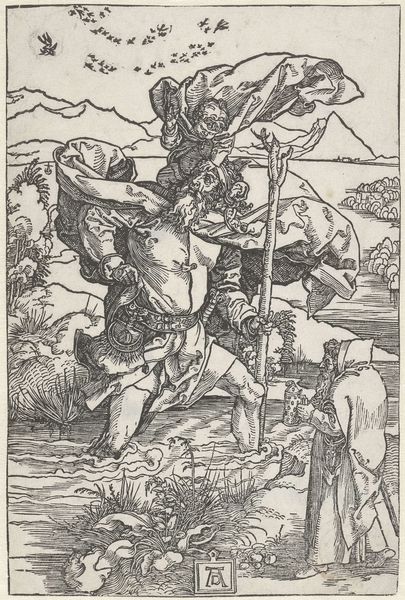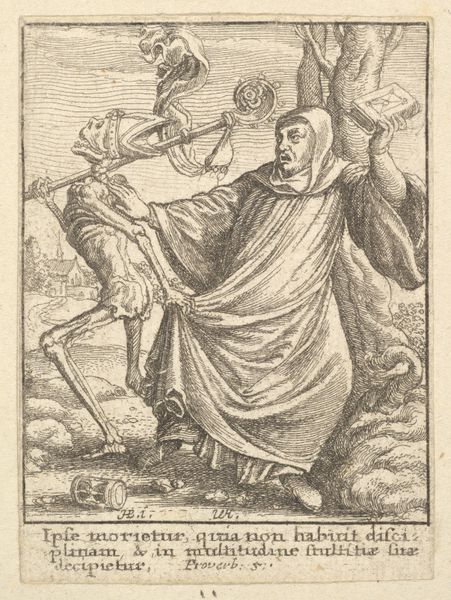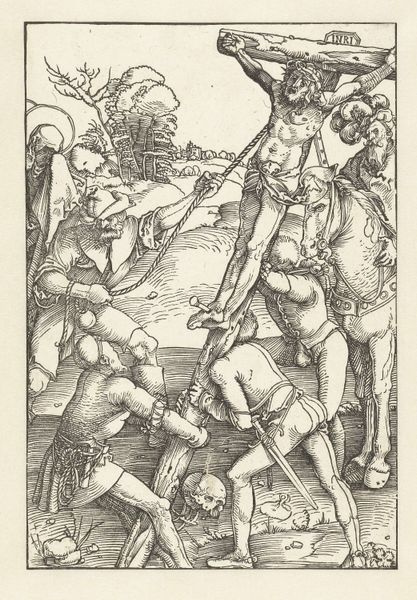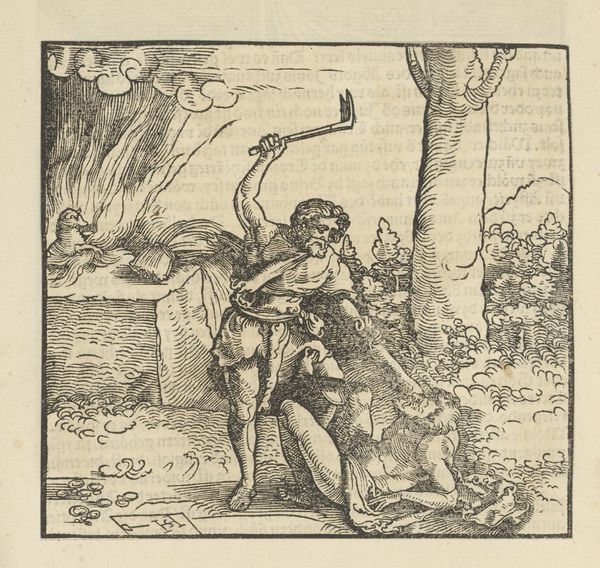
Dimensions: Sheet: 9 5/16 × 6 5/16 in. (23.6 × 16 cm)
Copyright: Public Domain
Editor: This is Hans Baldung’s "Conversion of Paul," created sometime between 1503 and 1513. It’s a print, so a drawing of some kind, and it looks pretty dramatic! The figure on the horse is being blasted by light and there are angels. What do you see in this piece? Curator: I see a powerful rendering of transformation and power, both spiritual and worldly, ripe with social implications. Baldung situates the conversion of Paul—a narrative intrinsically tied to the foundations of Christianity—within the artistic milieu of German Expressionism. Consider the very deliberate choice of printmaking. In whose hands did it put the narrative, and how was that message propagated? Editor: You’re right. A print would make it much more accessible to people than, say, an oil painting. Curator: Precisely. And look at how Baldung visualizes this moment. The near-hysterical posture of Paul, the exaggerated dynamism of the horse…how does this compare to, let’s say, Italian Renaissance depictions of religious scenes? Editor: It’s much more raw, I guess? Less idealized? Curator: Yes! The emotional intensity speaks volumes about the anxieties of the era, the shifting religious landscapes and growing social unrest, all funneled through Paul’s moment of radical conversion. Where do you see today those themes echoed? Editor: I suppose, the work makes me reflect on how the imagery and narrative associated with transformative conversion—religious or otherwise—has always been charged. Curator: Indeed. This piece is not just a biblical story; it's a potent symbol of the power dynamics inherent in conversion and how art functions to legitimize—or critique—the societal upheaval and reassessment that accompany such changes. Thanks for those ideas.
Comments
No comments
Be the first to comment and join the conversation on the ultimate creative platform.
